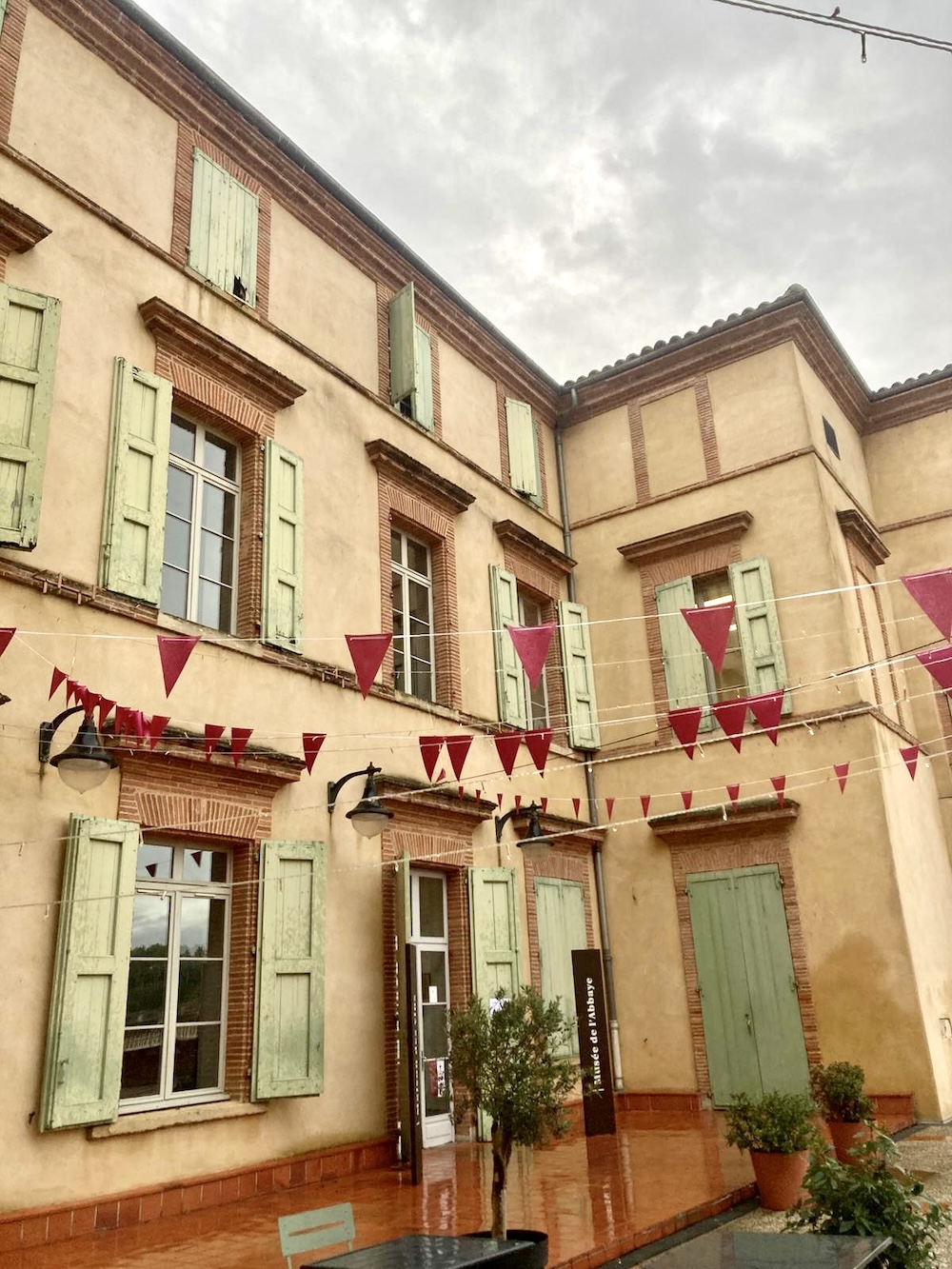
Discovery
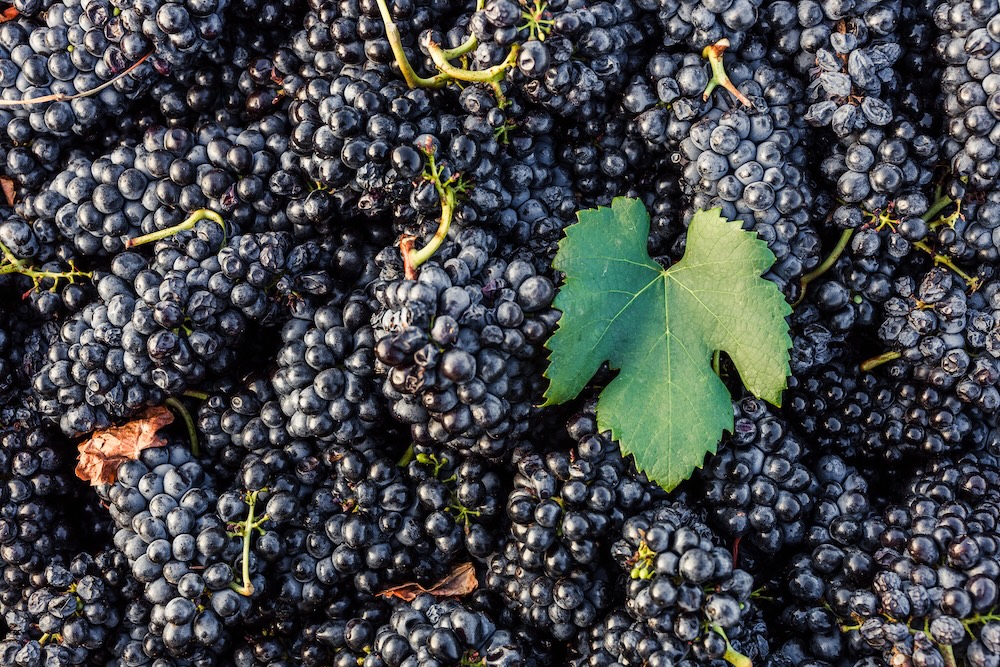
Discovery
By Samarie Smith Dipwest, posted on 04 August 2025
If one had to introduce Pinotage as a person, it would be a lab baby who defied the odds; a wild child that grew up so fast, it could never be left unsupervised. But once it was finally given the space to be itself, it thrived - through tough conditions, harsh opinions and shifting expectations. It built its personality under pressure, always a little rebellious. Maybe that’s exactly what propelled this misfit to grow into a South African cult icon, now celebrating its 100th birthday.
There’s something larger than life about wine - palpable, if you trace its journey from ancient amphorae to crystal stemware. Poured in celebration and debated in revolution, wine has long been a witness to human history. It was privy to some of the world’s defining moments and proud firsts that stirred identity and pride. Like Italy that gave us da Vinci. France, the Lumière brothers. Germany, the printing press. South Africa, further down the timeline, gave the world its first human heart transplant. It’s in moments like these - albeit monumental or minuscule - that a nation builds its confidence. Which is why, in 2025, we pause to toast the centenary of a grape: Pinotage.
Pinotage was born in 1925 when Professor Abraham Izak Perold crossed Pinot Noir with Cinsaut in the quest to marry the elegance of Pinot Noir with the resilience of Cinsaut. What began as an experiment in his garden would, over time, evolve into South Africa’s signature grape. A century later, Pinotage stands as a symbol of South African ingenuity – its story told in a voice that’s unafraid and brave, and expressed through a wine that continues to refine its aesthetic to remain progressive, while still being nothing short of delicious.
Pinotage pioneers have learned from the land since the 1950s, vintage by vintage, adjusting their hands accordingly. Bellevue, for one, is stitched into the fabric of the variety’s history, with cellarmaster Wilhelm Kritzinger at the helm since 2002, calling it a “privilege and a responsibility” to be one of Pinotage’s modern-day custodians. Bellevue’s historic 1959 vintage – made entirely in their own cellar from the original 1953 ‘Huishang’ block – was awarded the General Smuts Trophy as the best wine at the National Wine Show. The wine was later bottled and released under the Lanzerac label, a brand then owned by the erstwhile Stellenbosch Farmers Winery. Still, Bellevue set forth to carve its own Pinotage identity and its portfolio now spans from supermarket-friendly wines to its flagship 1953 Heritage Pinotage - still produced from that original vineyard. Both their Heritage and Reserve Pinotage received 5 Stars in the 2025 Platter’s Wine Guide – the Bellevue Reserve Pinotage 2021 receiving Double Gold (90 points) from an equally impressed Gilbert & Gaillard panel.
“Old vines teach you things,” says Kritzinger. “They’ve matured, just as I have. And over the years I’ve had to adapt my approach to honour their evolution.”
For Kritzinger, the greatest compliment is when a taster pauses mid-sip and says: “This wine tastes like where it comes from.”
“Think raspberry, beetroot, Turkish delight. Poise. Think Stellenbosch.”
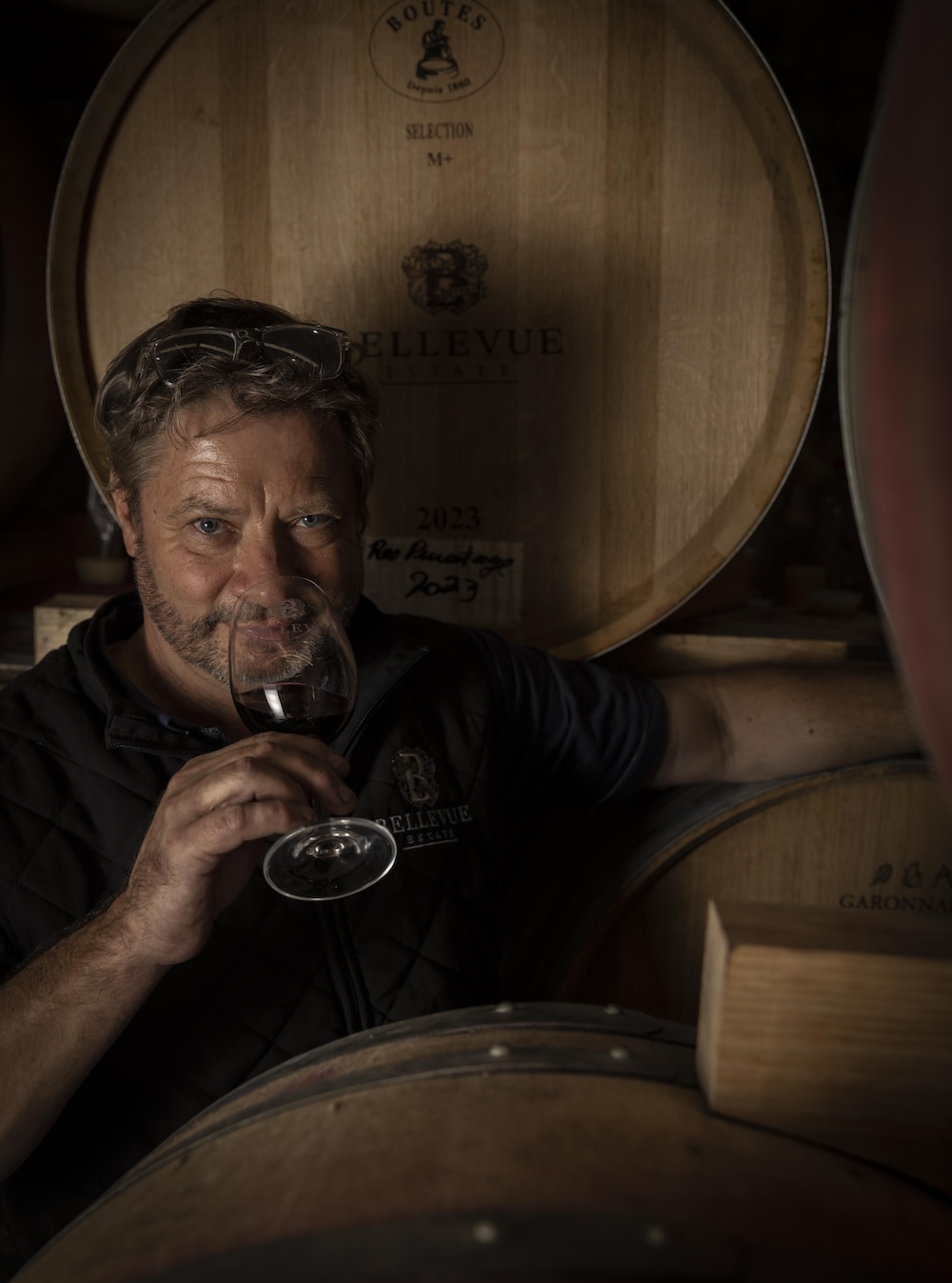
Bellevue Cellarmaster Wilhelm Kritzinger believes the way forward is for viticulturists and winemakers to pursue the elegant side of Pinotage
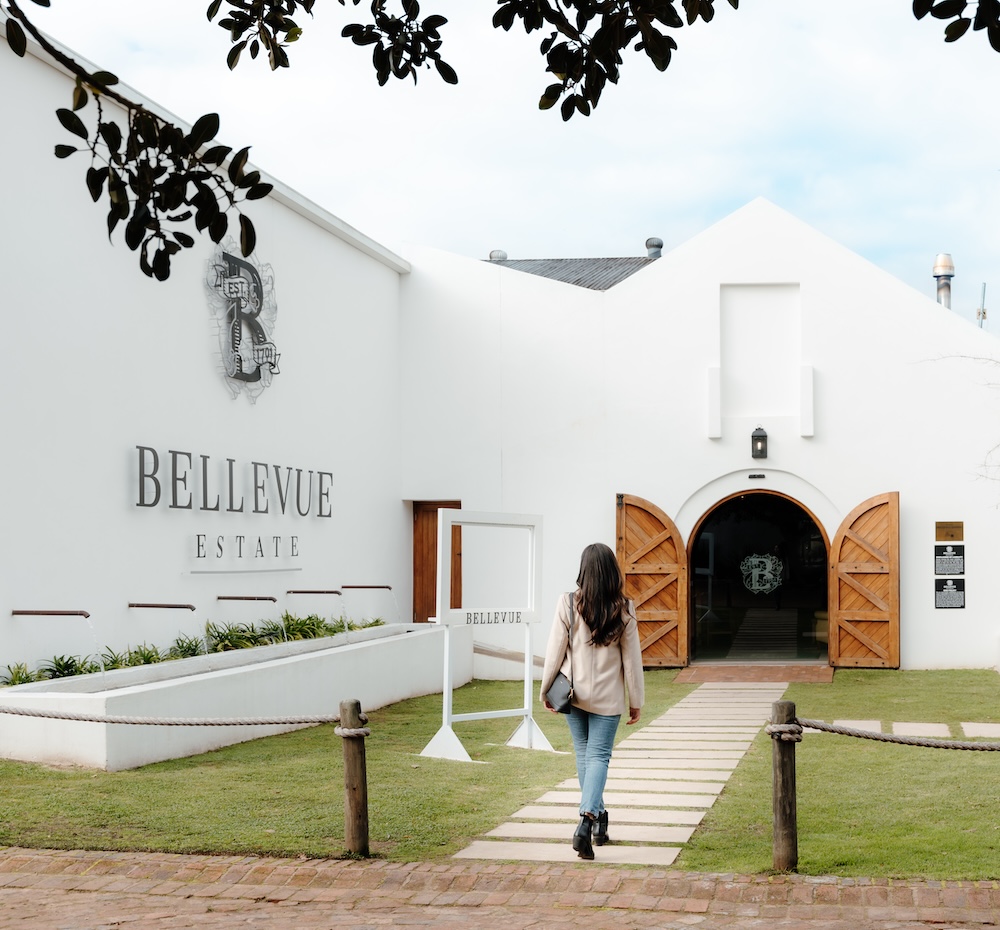
Bellevue Estate is a true ambassador for the Pinotage story.Bellevue Estate is a true ambassador for the Pinotage story.
Lanzerac, too – also situated in Stellenbosch – will forever be linked to the commercial birth of Pinotage with the 1959 vintage label that lit the match for Pinotage’s bright future. Cellarmaster Wynand Lategan, who has steered Lanzerac’s winemaking for many years, reflects on the grape’s evolution since: “Pinotage had to fight a few headwinds to find its place in the world of great wines,” he says. “Those early pioneers can be proud of how far it’s come.”
He credits the Pinotage Association for helping shape vineyard and winemaking practices around quality and structure. But his own journey with the grape has been personal: “Pinotage chose me, not the other way around,” he says. “It taught me patience and to respect each vineyard and tank as its own entity.”
The turning point came in the 90s, when South Africa rejoined the global stage. “We had to learn, fast, what ‘world-class’ really meant. We adapted. And over the past 30 years, we’ve carved out a clear identity for the variety.”
For him, Pinotage has emerged as the local red that can balance tradition with modern demands – hence garnering Double Golds (90) for the Lanzerac Pinotage Extra Reserve 2021 (90) and the Lanzerac Pinotage 2022 (92). “The lovers of those bold, older style Pinotages are still out there,” says Lategan, “but there’s also space for fresher, more refined expressions.”
While Lanzerac holds the commercial claim, the narrative funnels through to the late Spatz Sperling’s memoirs, indicating Delheim to have been the first independent Stellenbosch estate to bottle its own Pinotage – releasing its 1960 vintage just one year after Lanzerac.
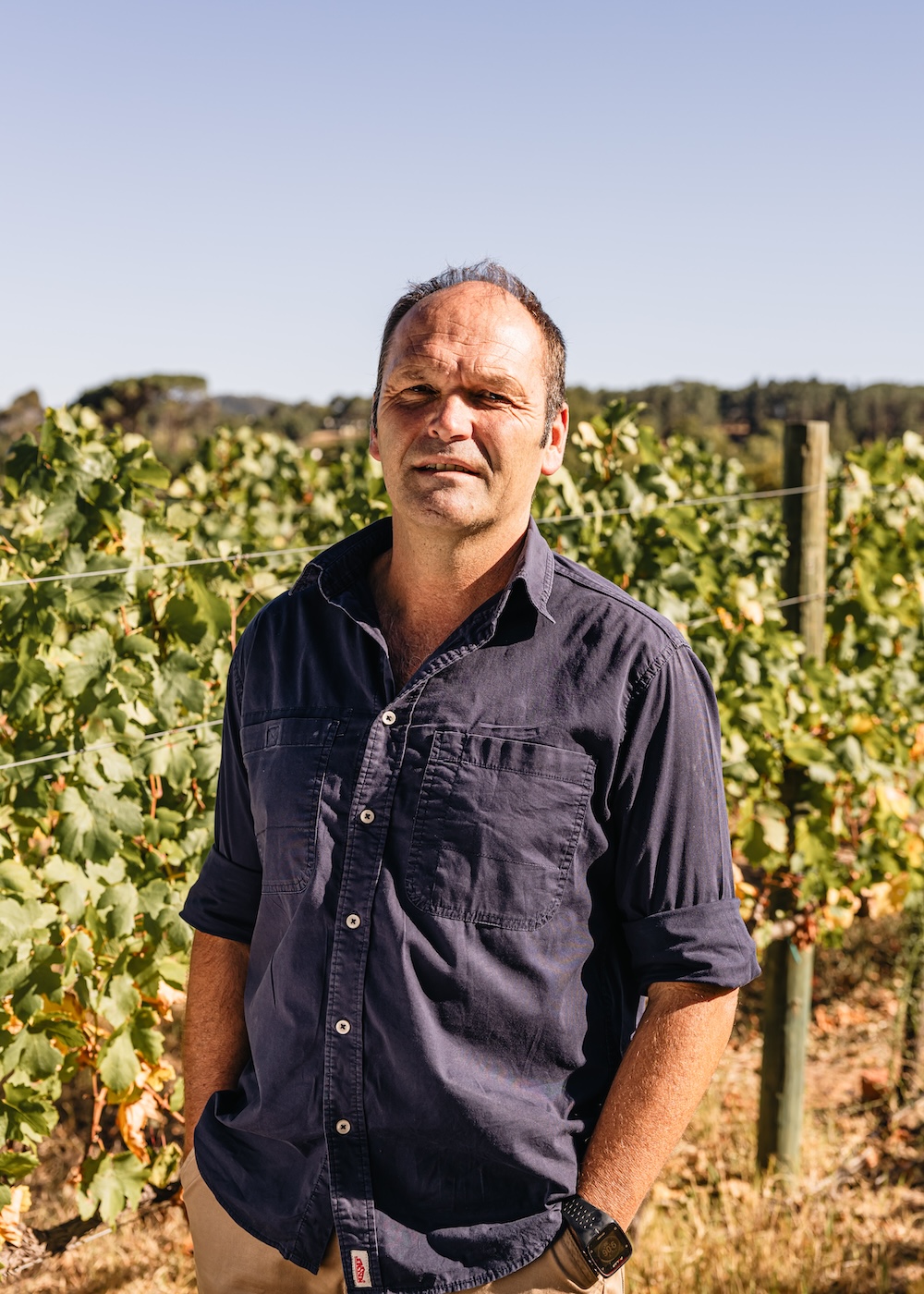
Lanzerac Cellarmaster Wynand Lategan is confident that a true Pinotage is marked with a sublime balance of fruit purity, power and finesse.
Delheim director Victor Sperling tells how his father, Spatz, arrived from Germany in 1951 and in his 2005 memoir writes about the farm experimenting with Pinotage in the 50s. The memoir also features light-hearted Pinotage moments – like the time in 1966, while inspecting a filling tank, Spatz’s precarious perch gave way: “The tank fell down, the vintner (Spatz) nearly broke his neck and the wine came tumbling after! Hundreds of gallons of Pinotage streamed out of the cellar, into the sluice and down the mountain.”
And there were more tender Pinotage moments. When Spatz proposed to Vera Reinarz in 1965 – just two weeks after meeting her – over a glass of Delheim Pinotage in the garden.
Early Delheim labels referred to Pinotage as a ‘Burgundy type’ and by tasting their Pinotages from the ’70s and ’80s today, says Delheim Cellarmaster Roelof Lotriet, one can tell the approach was always gentler. Back then, every winemaker had to find their own way. And today, Delheim’s flagship Vera Cruz Pinotage 2022 reflects that a “structured yet refined” philosophy, earning Double Gold (92), will always be a part of Delheim’s Pinotage legacy.
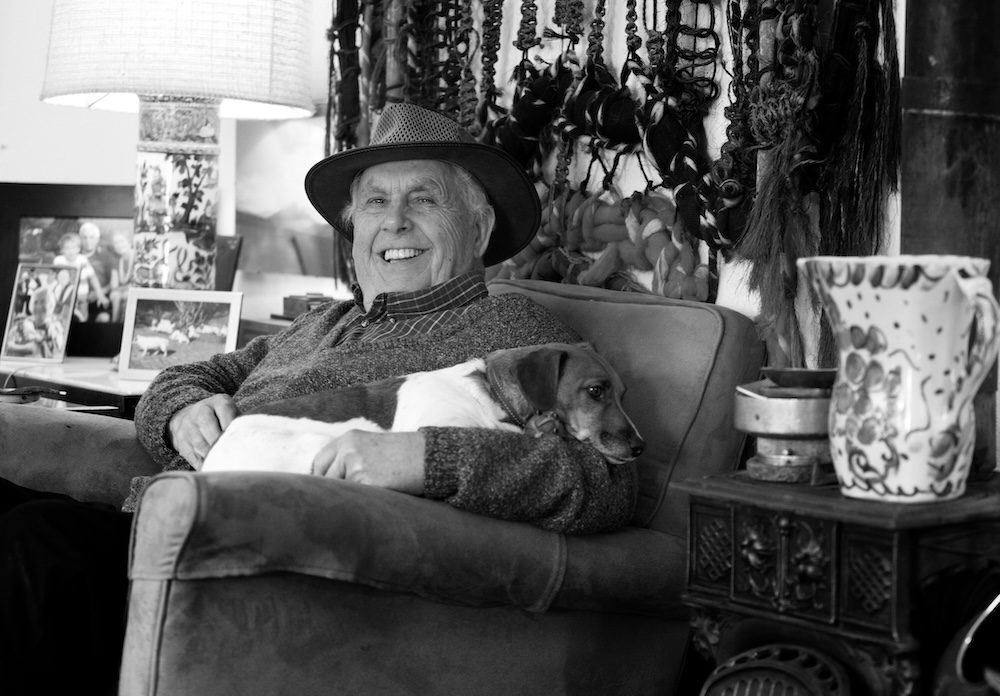
Delheim Director Victor Sperling tells that since being a youngster, his father always spoke of Pinotage as one the primary grape varieties at Delheim.
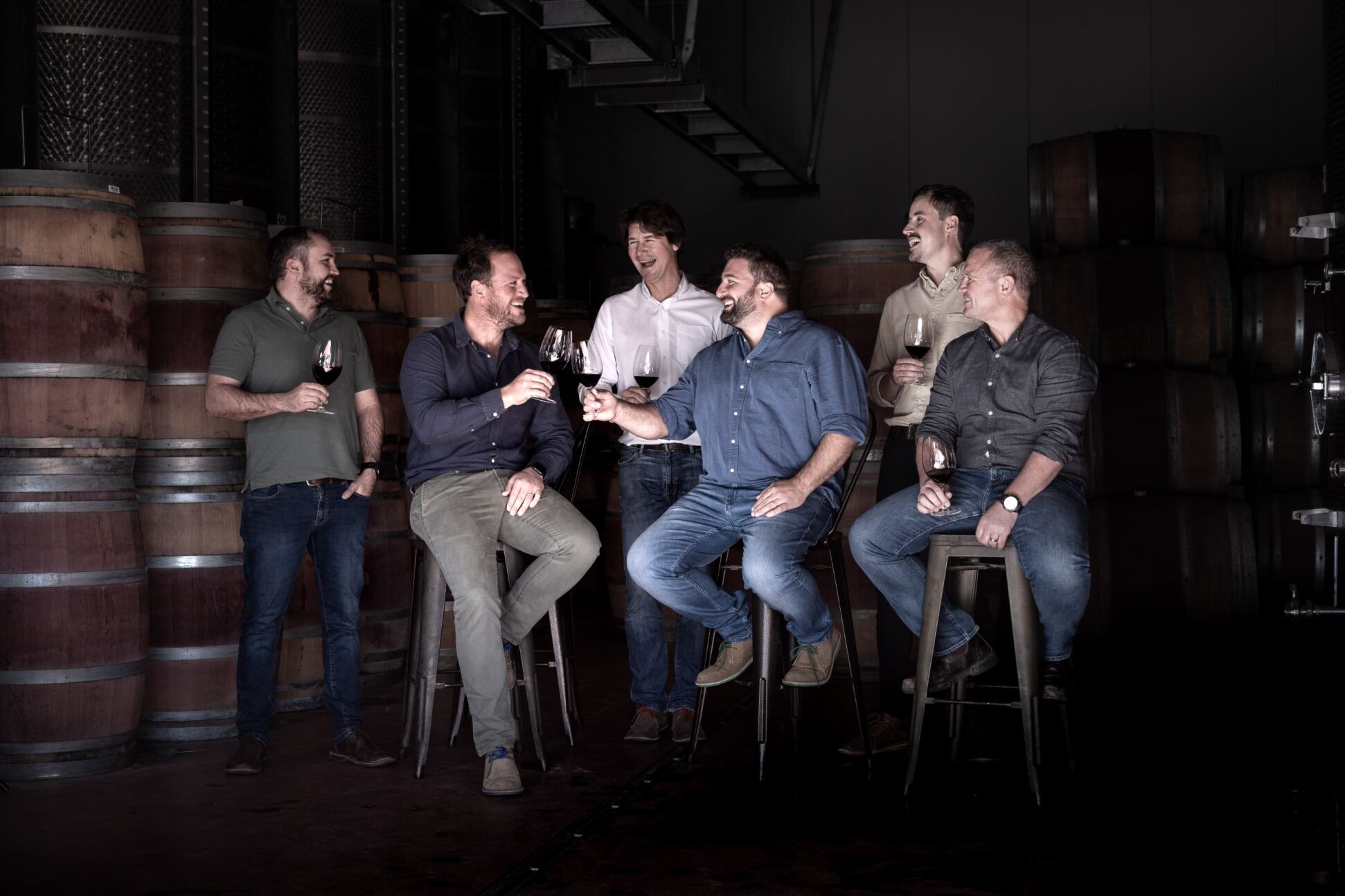
Grand Pinotage includes 6 premium wines that celebrate South Africa’s heritage and its original contribution to the world of wine.
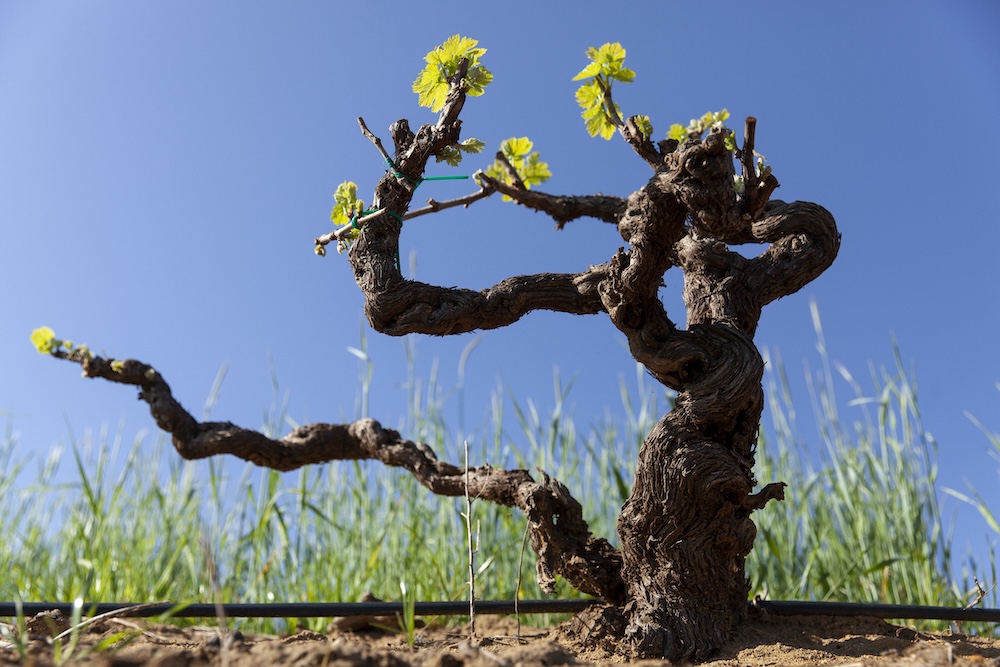 Kanonkop Estate is a member of Grand Pinotage, with heritage blocks tracing back to the 50s and 60s.
Kanonkop Estate is a member of Grand Pinotage, with heritage blocks tracing back to the 50s and 60s.
Driving into Beyerskloof Estate, one is met with the bold claim: ‘The Home of Pinotage’ – a title well earned through the legacy of Beyers Truter. While Pinotage has since spread far and wide, Truter remains its most steadfast advocate. It all began when winemaking jobs were few, and a newly married, job-hunting Truter – then working for the Deciduous Fruit Board – popped out to buy bread. He bumped into an old classmate who told him Kanonkop was looking for a winemaker. And just like that, a Pinotage trailblazer was born, his bread buttered before he even got home. At Kanonkop in the 1980s, he helped prove Pinotage’s global promise, winning International Winemaker of the Year at the IWSC. His story is now told in Traildust in a Wineglass, a collection of memories by friend Riaan Gerber.
With his grounded, gravel-edged Afrikaans accent, Truter reflects: “Pinotage is no longer just a cultivar – it represents resilience and it’s part of our cultural identity. It’s like watching your child grow up, stumble, find their footing and then thrive. For me, its centenary is the culmination of decades of love, belief and hard work. To see it now – 100 years strong – is deeply emotional.”
His gift for storytelling is also etched into his wines: the Kriekbult 2022 (94), a tribute to an iconic hill and the vineyards that crown it; Beyerskloof Diesel 2022 (93), named for his dog; and the perfumed elegance of the Beyerskloof Grand Pinotage 2019 – made by his son Anri – the third Double Gold in this tasting and a fitting nod to the very classification Beyers helped shape.
As the driving force behind the creation of South Africa’s first formal classification dedicated to Pinotage, he shares that the idea for Grand Pinotage came from a simple belief: “Greatness must be recognised, nurtured and preserved.”
And so, in 2020, the Grand Pinotage classification was born. The selection of the inaugural six wines for the classification was based on stringent criteria. Each wine had to demonstrate a proven track record of consistent high quality across multiple vintages; a distinct sense of place, with detail and character reflecting unique vineyard sites; unequivocal ageing potential, aligned with international fine wine standards; and a history of accolades from respected local and international critics and competitions.
All six 2019 Grand Pinotage producers were awarded Double Gold, with L’Avenir leading the pack at 97 points – the highest score ever awarded to a Pinotage judged blind by Gilbert & Gaillard. The other scores were: Kanonkop (95), Beyerskloof (95), Kaapzicht (93), Simonsig (92), and Rijk’s (92). Judges praised the collection for its fruit purity, refined structure, layered complexity and exceptional ageing potential – traits that galvanised their outstanding contributions to the reputation of Pinotage.
“For too long, Pinotage had no formal measure of excellence, and that held it back. This classification doesn’t just honour individual excellence – it elevates Pinotage globally, placing it among the greats. Grand Pinotage is a commitment to heritage, terroir and mastery. The accolades speak for themselves – proof of the grape’s character, diversity and quality. Long term, this is a benchmark – a lighthouse, guiding the next generation to aim even higher.”
Truter is clear that Grand Pinotage is not about elitism, but about trust.
“For winemakers, it’s recognition. It gives us something to strive towards. For consumers, it offers clarity – confidence that they’re choosing something exceptional. And for South Africa, it sends a message: We’re not defending Pinotage anymore – we’re defining it with a mark of quality. Like a Grand Cru. A First Growth. This is our version of that.”
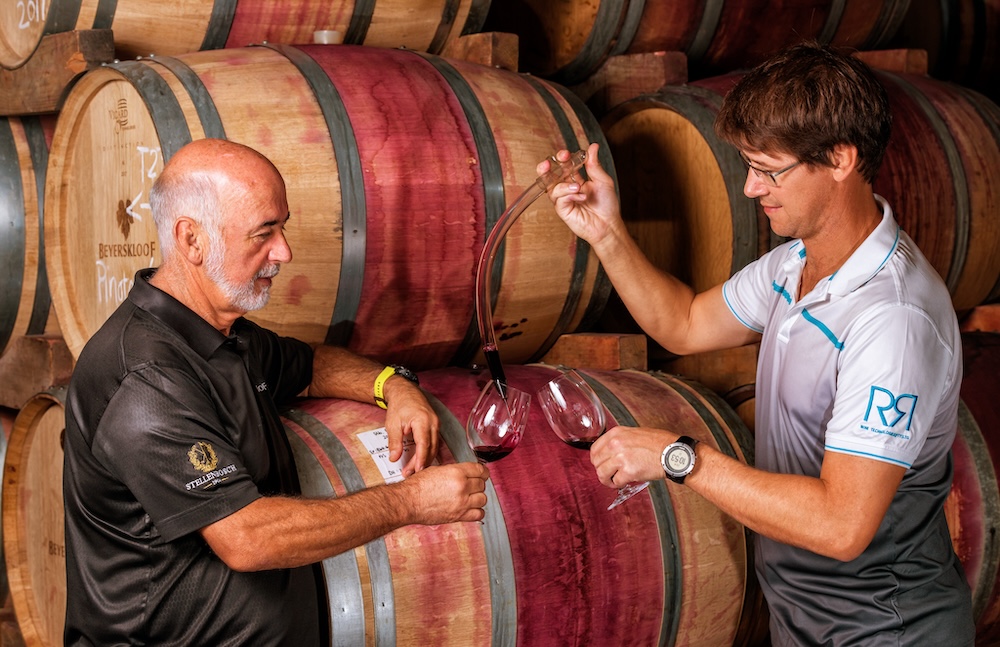
Beyers Truter has now handed the baton to his son Anri
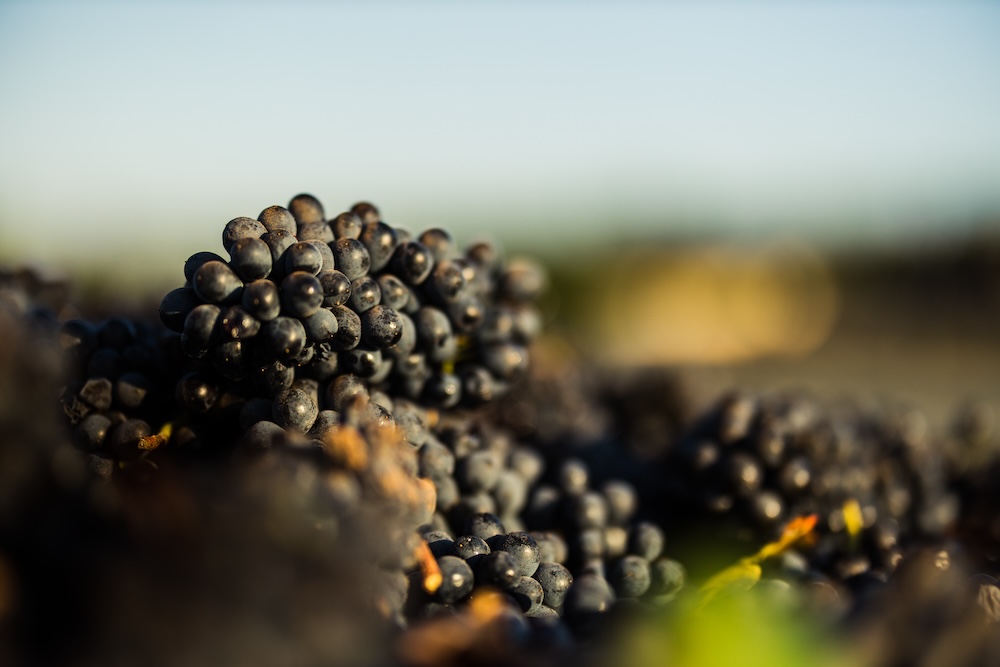
Beyers Truter, owner of Beyerskloof, pledged to host 100 Pinotage tastings in 2025 as a tribute to the variety.
Just as South Africa once had to jump through hoops to establish international varieties in its own soil – sometimes even smuggling in plant material in the hope of feathering the country’s wine nest – so too has the world begun to wake up to Pinotage. A grape once met with scepticism is now being planted in far-flung places like New Zealand, Canada, the USA and the UK. What was once a curiosity has now earned its stripes as a global contender.
One of the brands leading that charge is KWV, where Pinotage is championed under its Cathedral Cellar brand (94) and its premium The Mentors brand (93), both earning Double Gold. And of course, there’s their multi-awarded Cape Blend, The Mentors Perold – a Double Gold achiever paying tribute to the father of the variety.
According to red winemaker Izele van Blerk, the first Perold was, interestingly, not a Pinotage, but 100% Shiraz made to reflect the best of a vintage. But the pull toward home was inevitable, leading to the creation of Perold Insignis (Shiraz) and Perold Tributum (a Cape Blend). By 2017, the Perold label had been folded into the ultra-premium The Mentors range.
“We have to celebrate our only homegrown variety,” says van Blerk. “Pinotage isn’t easy – it ripens early, arrives in the cellar first and often carries higher pH and lower acidity. It can spike in volatile acidity if you’re not paying attention. So it’s vital to keep your finger on the pulse. Wine is alive - and Pinotage will remind you of that every step of the way.”
“What it gives back is worth every bit of effort,” she emphasises, “Bold tannins, beautiful concentration and fruit purity – dark plums, stewed fruit, black olives, but also raspberries and strawberries. That duality is its power.”
She tips her hat to Professor Perold, Dr. Charles Niehaus and torchbearers like ‘Oom’ Beyers Truter and Abrie Beeslaar, proving to the world that, yes, you can win International Winemaker of the Year with Pinotage.
KWV Chief Viticulturist Marco Ventrella echoes van Blerk’s sentiment, working with Pinotage vineyards across the Western Cape. And for him, Pinotage’s transformation began in the vineyard.
“There’s been a fundamental shift in how we manage Pinotage vineyards – especially for fine wine. We’re more patient – waiting for phenolic ripeness and chewing those skins until we are 100% happy. Site selection is no longer optional – it’s everything. We’re choosing cooler sites with altitude or proximity to the ocean to give us better acidity and lower pH. And if the soil has body, so will the wine.”
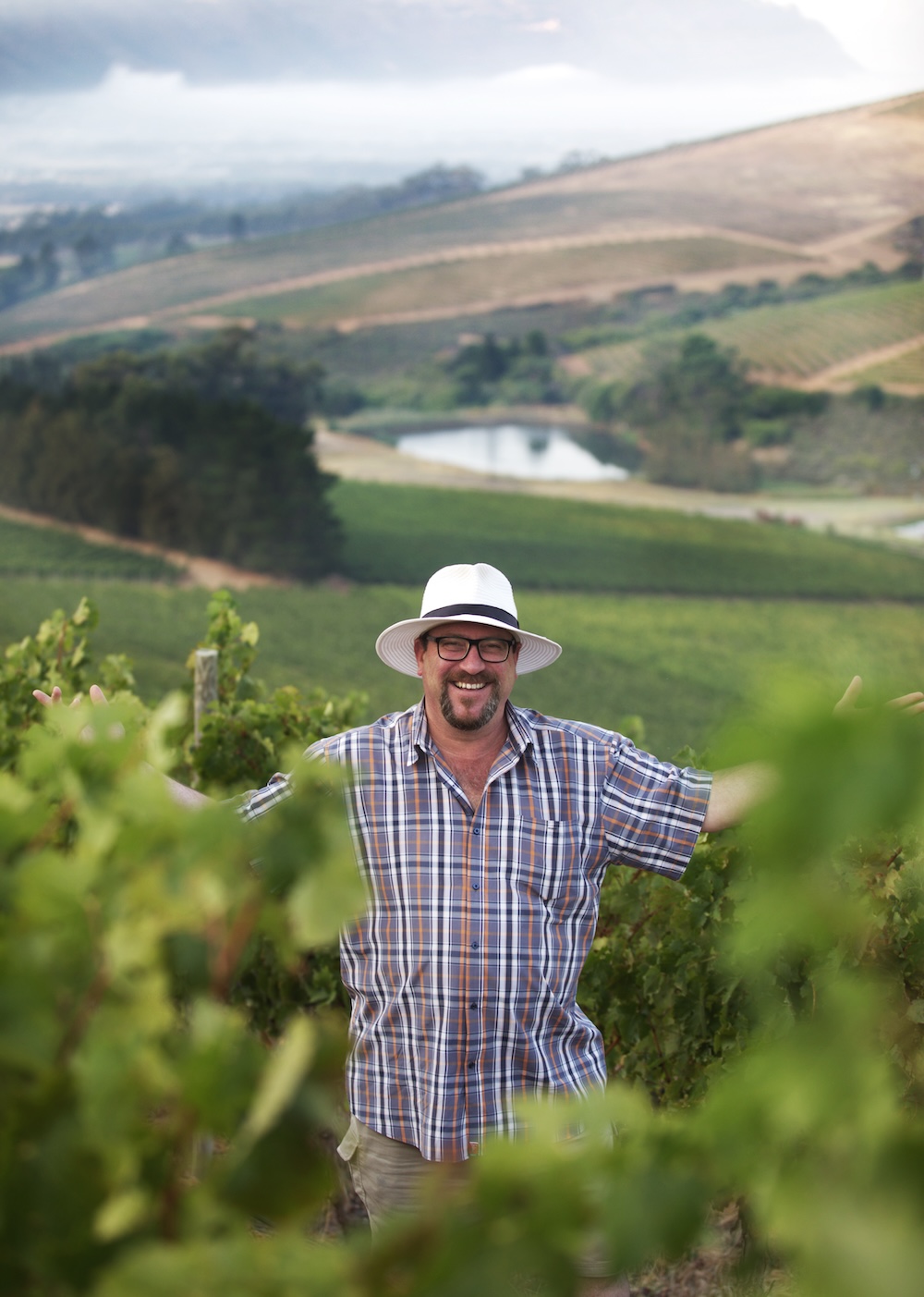
KWV Chief viticulturist Marco Ventrella believes a firm understanding of Pinotage vineyards defined their aim to maintain freshness and longevity.
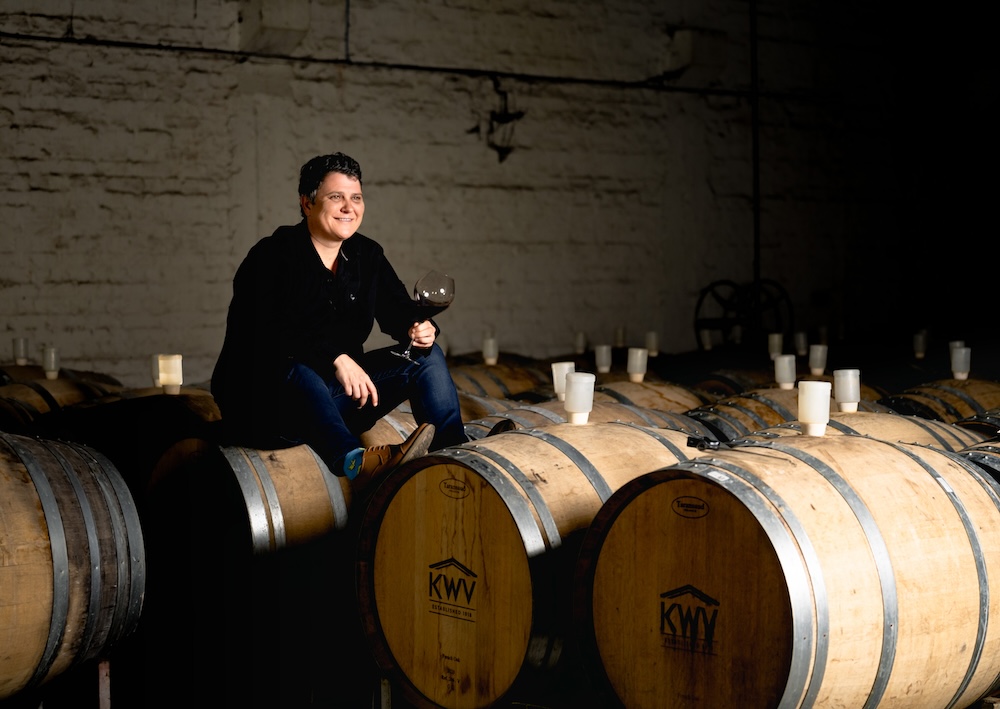
KWV The Mentors winemaker Izelle van Blerk says consumers thirst for something different and authentic – Pinotage giving them exactly that.
Ventrella pauses, then adds: “We’re only scratching the surface. Pinotage already holds its own in the world of fine wine. Today, it may still feel like a self-made man in a room full of blue bloods – but give it time. It’s becoming one of the classics.”
While a farm like Lievland hasn’t historically been linked with Pinotage, cellar master Riaan Moller is changing that. Over the past six years, they’ve planted four new Pinotage blocks – and the results speak volumes.
“We can see the quality. Pinotage loves it here,” he says. “And with the shift toward more elegant expressions, we’ve had the freedom to experiment.”
The Gilbert & Gaillard panel concurred, awarding the Lievland Pinotage 2023 (91 points), praising its genteel power and intriguing berry fruit.
“Pinotage is distinctive. And more often than not, once people taste it, they fall in love. That uniqueness is exactly what gives us an edge.”
He recalls a dinner at Cape Town’s luxurious Vineyard Hotel, where the chef paired Pinotage with tuna.
“I thought, this will never work. Pinotage with fish? But it was magical – still one of the best pairings I’ve ever had.”
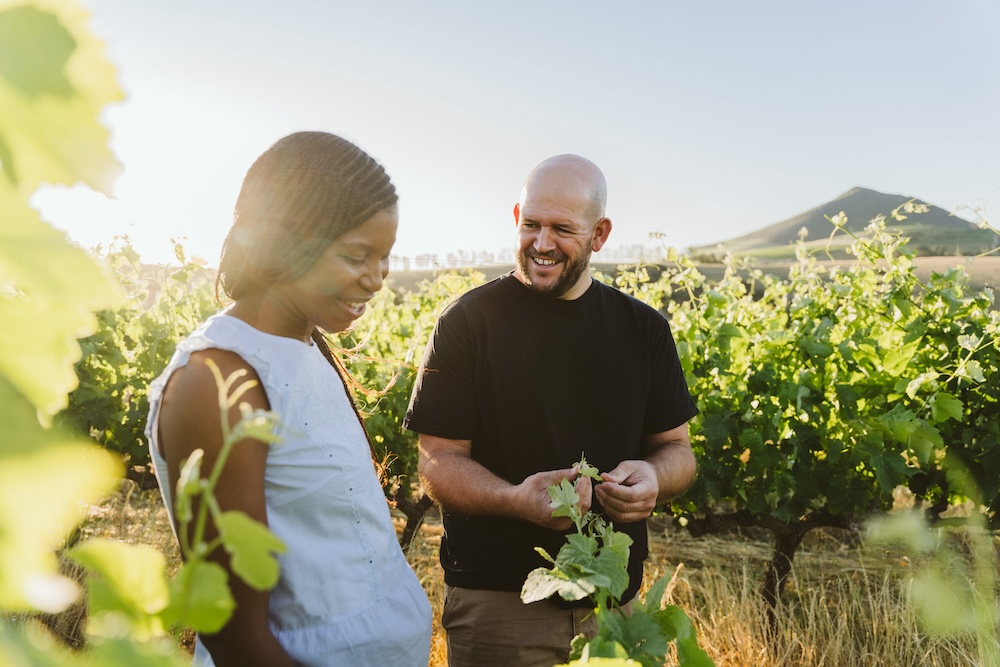
Lievland and its natural surrounds are becoming more and more known for Pinotage

Lievland winemaker Riaan Moller believes Pinotage has a beautiful story that resonates.
Frans Smit, CEO of Spier, has spent nearly three decades shaping Pinotage’s narrative. From his early days with Longridge Pinotage 1997 to his first top-tier Pinotage from dryland koffieklip soils in Bottelary in 1998, to creating the now-decorated 21 Gables Pinotage label – his track record speaks for itself. “Consumers love Pinotage,” he says without hesitation.
And so did the judges. Spier doesn’t compromise on quality – whether mid or top tier. Both the Seaward Pinotage 2023 and the 21 Gables 2020 earned 90 points, proving consistency across the range.
“Pinotage is a key differentiator in many international markets,” says Smit. “And it fits our sustainability model. It thrives across varied terroirs, yielding styles that reflect their site. It is drought-tolerant, disease-resistant and adaptable. With the right rootstock, it’s resilient – exactly what the future needs. These qualities give it a distinct edge.”
With a skilled team, Spier has fostered a deep understanding of how to manage Pinotage in the vineyard and in the cellar. “It’s a grape that demands precision and respect. We’ve dialled into balance and freshness, and we’ve become better, more informed custodians of Pinotage. When it’s done well, Pinotage offers a one-of-a-kind experience.”

Spier cellar master Johan Jordaan
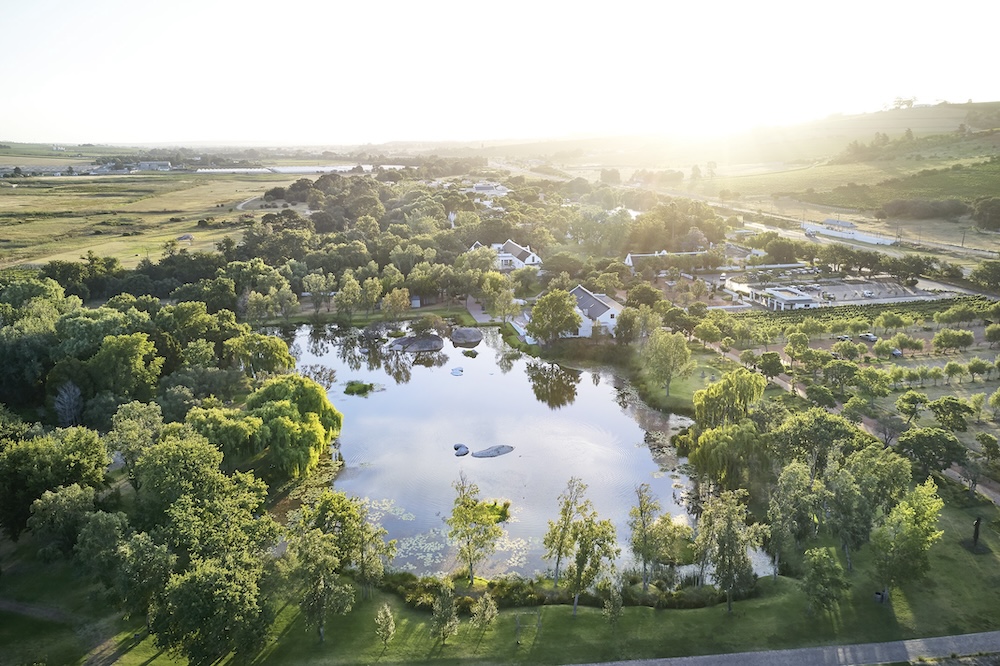
Spier has worked with old-vine Pinotage since the late 90s and reinvested in new plantings to refine their vineyard strategy.
Dirk Coetzee, cellar master at L’Avenir, was mentored by his predecessor Francois Naudé and spent 15 years navigating how tradition and modernity can co-exist in one bottle.
“Pinotage is South Africa’s biggest flagbearer,” he says. “Very few countries can claim to have created a grape that’s truly their own – and succeeded with it.
From the outset, their goal has been to showcase the variety’s versatility, whether through delicate rosés or structured reds. “You don’t force Pinotage. You work with it. You wait, and it rewards you.”
The L’Avenir Single Block Pinotage 2021 (93) is a perfect example – made from the same ‘Block 2’ for the past 13 years. It’s a vineyard planted over a ridge of decomposed shale – a site Coetzee calls “part of our DNA.”
“When I look at my harvest report for the Single Block Pinotage, it reads: Lush, juicy and vibrant, with beautiful colour – exactly the style of modern Pinotage that is making an impact globally. When you taste that wine years later, I can say with confidence it will keep its purity of fruit, balance and refined tannin structure.”
He’s also one of the six producers behind Grand Pinotage and the Grand Pinotage from L’Avenir achieved an impressive 97 points.
“Being selected is a huge honour. Pinotage deserves its place among the noble grapes of the world. And that’s not about ego – it’s about belief. We needed a quality benchmark at a price point that reflects its ageing potential. Pinotage is already a fine wine. It’s just waiting for the world to catch up.”

L’Avenir makes quality wines consumers connect with while staying true to an identity that cannot be replicated elsewhere
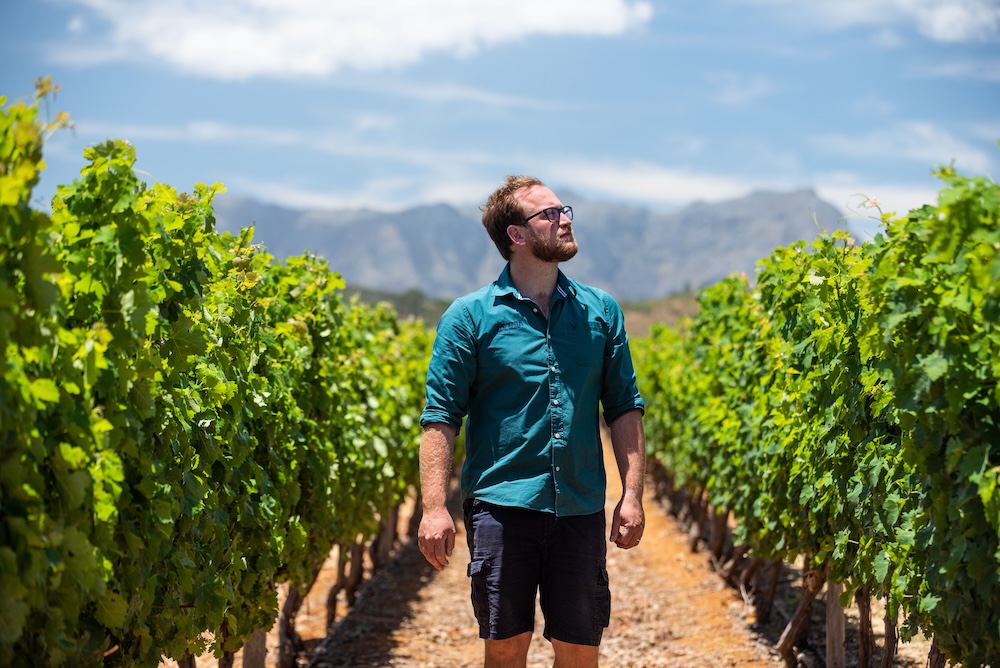
L’Avenir winemaker Dirk Coetzee believes the Pinotage centenary highlights South Africa’s growing reputation for creativity and excellence.
From humble beginnings to becoming the third most planted variety in South Africa, Pinotage has come a long way. A century later, the wine industry stands vindicated in its belief in this once-uncertain grape. With plantings now stretching into Africa and beyond – even into English sparkling wine – the South African wine fraternity proves that sometimes, the smallest idea can leave the biggest mark.
Celebrating Pinotage turning 100 might not carry the weight of a first heart transplant, but this grape gave the wine industry its own kind of heart. It also keeps filling the hearts of people who love hearing stories about South Africa – people who love to visit the country and revel in its success. And that’s what makes it more than a grape. It’s a movement, with real staying power. Like the wine.

Discovery
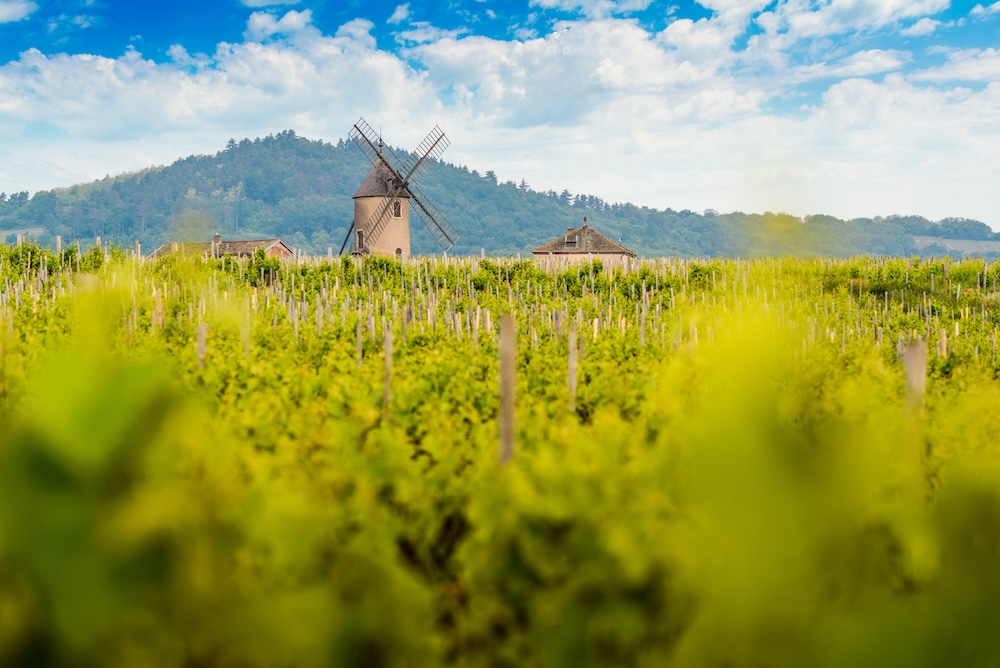
Discovery
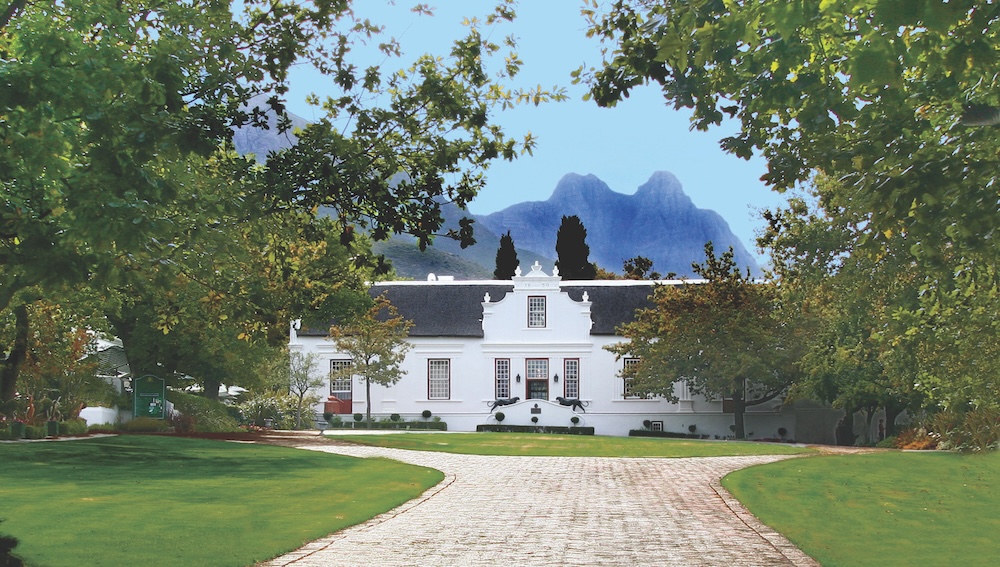
Discovery